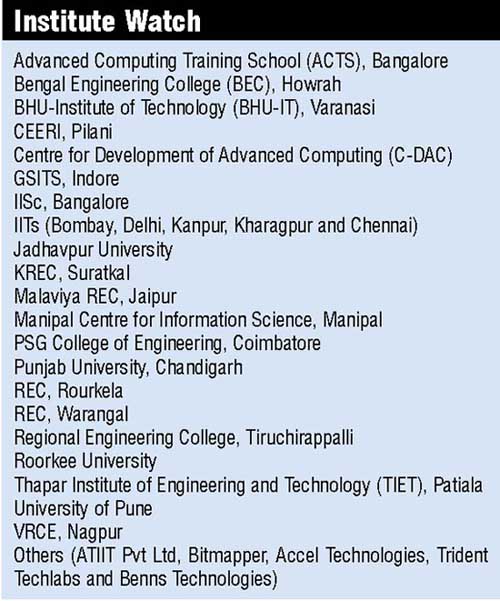There are also some highly specialised functions like process engineering and packaging engineering. Process engineering involves new wafer process development, device modeling, and other research and development projects. A packaging engineer, on the other hand, develops precision packaging technology and new package designs for the chips, characterises new packages and performs modeling of the new designs. Compared to other roles discussed earlier, there are no quick rewards in these jobs! If you are highly trained in semiconductor devices and willing to experiment, and do not mind wearing bunny suits (the clean-room uniforms used in all fabs), these jobs are for you.
Supportive functions like CAD engineering also demands importance. A CAD engineer is responsible for acquiring, maintaining or developing all CAD tools used by a design engineer. Most companies buy commercially available CAD tools for schematic capture, simulation, synthesis, test vector generation, layout, parametric extraction, power estimation and timing closure; but in several cases, these tools need some type of customisation. A CAD engineer needs to be highly skilled in the use of these tools, to write software routines to automate as many functions as possible and have a clear understanding of the entire design flow.
Moolah matters
For those of you who are already enjoying the brainteasers in designing and testing the chips with all the innovation and rapid development, this field may provide unlimited scope to grow. Let’s check whether VLSI is rewarding not just from the intellectual point of view but also from the ‘pocket’ point of view.
Government or public-sector players offer a starting salary in the range of Rs 8000 to Rs 10,000 per month (excluding allowances) for diploma holders and Rs 15,000 to Rs 20,000 for degree holders. The private sector is always ready to offer more lofty figures for candidates with a suitable exposure. The ability to handle multitasking jobs may be a defining factor. For a typical fresher, the starting salary is Rs 300,000 upwards per year depending on the company, the need and the skill level demonstrated. Design engineers are the most sought after because of the industry’s emphasis on continuous new product development, miniaturisation and innovation in integration.
Typically, a master’s degree holder can expect about 10 per cent higher than the one with a bachelor’s. As you gain experience, this field offers one of the best growth potentials, both on the technical as well as management ladder. Though the global recession has hugely affected the starting salaries in the private sector at present, last year the average pay package ranged between Rs 700,000 and Rs 1.5 million per annum for professionals with four to five years of experience.
How to get the entry pass?
First of all, let’s make it clear that for working in this field it is not mandatory to have an engineering degree or diploma in electronics engineering, electrical engineering or computer science. These certainly are the obvious qualifications to earn, but graduate or postgraduate degree in physics also qualifies one to work as an engineer. The physics of semiconductor devices is the fundamental basis of VLSI.
As is always the case, “the earlier, the better.” If you ever tinkered with a broken radio set, you have already started. Academically, the right time to acquaint yourself with various specialisations of electronics is when you are in the second or third year of engineering. You can choose your electives so that you can concentrate more on specific subjects. A fresh engineering graduate has several opportunities to use his engineering skills in the VLSI world. As mentioned earlier, primarily, the work profiles can be classified as design engineers, product engineers, test engineers, process engineers or applications engineers. Of course, there are other important people like CAD engineers too who keep developing (or maintaining) all the important CAD tools and systems.
Irrespective of which job function you choose, there are certain basic skills required to break into this field. A VLSI engineer is expected to know the physics of semiconductor devices, linear systems, probability and random variables, engineering mathematics (Fourier, Laplace and Z transforms), circuit analysis and engineering electromagnetics. In addition to these solid Verilog/VHDL skills, familiarity with front-end design cycle, synthesis and simulation tool knowledge, sound digital design fundamentals and nonetheless knowledge of microprocessors would be an advantage for any aspiring candidate.
Where to start?
 VLSI circuits are everywhere—your personal computer, your cellphone, your brand new state-of-the-art digital camera or for that matter any electronic gadget you dream to buy. Actually, this field involves packing of more and more logic devices into progressively smaller areas. So the circuits that would have taken board-full of space can now be put into a small space few millimetres across!
VLSI circuits are everywhere—your personal computer, your cellphone, your brand new state-of-the-art digital camera or for that matter any electronic gadget you dream to buy. Actually, this field involves packing of more and more logic devices into progressively smaller areas. So the circuits that would have taken board-full of space can now be put into a small space few millimetres across!






